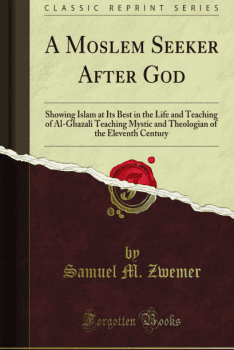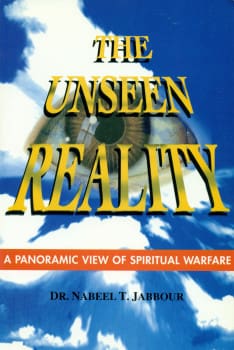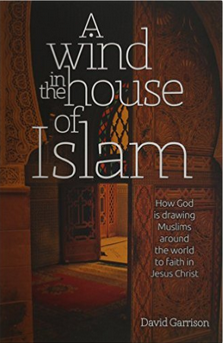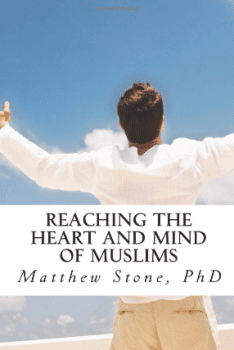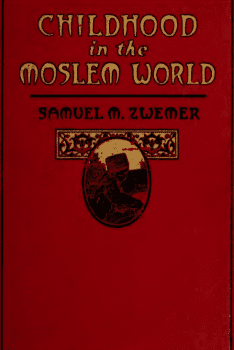Joel Richardson and the Rise of Islamophobia
In 2006 Joel Richardson made a splash in the evangelical world with his inaugural work, Islamic Antichrist: The Shocking Truth About the Real Nature of the Beast, in which he argues for an Islamic Antichrist, drawing parallels between biblical and Islamic eschatology. This was followed by Mideast Beast in 2012, which focuses exclusively on the scriptural case of an Islamic Antichrist. His thesis clearly found an audience as his work rose to the New York Times bestseller list and prompted the reinterpretation of prophetic literature in dispensationalist circles everywhere.
Being published in the aftermath of 9/11 and the political upheaval of the Iraqi war, Richardson’s audience was primed to hear a fresh interpretation of ancient prophetic literature that would make sense of the contemporary political scene. As the formerly looming threat of communism had waned, the prophetic interpretations of the previous decades grew stale and in need of revision. Suddenly a humanistic atheist from eastern Europe didn’t fit the mold of the west’s primary antagonist in the new millennium. The contemporary threat was the Islamic jihadist and the new challenge for interpreters of prophetic literature was to uncover the promise of Islam’s demise in biblical prophecy. While several authors have accepted this challenge, none has been as biblically thorough and widely read as Joel Richardson.
Though Richardson does not call himself a dispensationalist (he believes in a post-tribulation rapture) his work broadly follows the dispensationalist framework and hermeneutic. Dispensationalist eschatology sees history culminating in a seven-year period of tribulation and final apocalyptic judgment of God’s enemies at the triumphant return of Christ and inauguration of His 1000-year reign on the earth as described in Revelation 20-21. Most readers will likely recognize this eschatology in the immensely popular Left Behind series or in Hal Lindsey’s Late Great Planet Earth. A key hallmark of dispensationalism is a staunch literalist approach to Scripture, exceeding that of the traditional evangelical view of biblical inerrancy. In this view, every detail within the prophetic literature of the Bible will be literally fulfilled; any partial historical fulfillment is merely a precursor to the ultimate eschatological fulfillment. While this hermeneutic does not entirely ignore questions of genre, historical context, author, and original audience, such issues are superseded by the most literal reading of the text by the contemporary reader.
Not all dispensationalists agree with Richardson’s conclusions regarding Islam. Tony Maalouf for example found it increasingly difficult to call himself a dispensationalist because of the “various misperceptions and abuses associated with this system today.”¹ Maalouf was particularly concerned that post 9/11 anti-Arab sentiments and fear were overshadowing the need for mission work among Muslims. It is also worth noting that Richardson represented a departure from twentieth-century dispensationalism as he shone the spotlight on Islam as not just one, but the primary eschatological enemy of God. This article explores some of the ways in which Richardson’s eschatology has contributed to the rise of Islamophobia in the church, challenging the reader to reassess the biblical validity of a reading of Scripture that promotes the villainization of entire nations and people groups.
A common claim among self-proclaimed conservative experts on Islam is that they hold unique insight into the “true nature of Islam” that has been buried by the liberal media and moderate Muslims. Richardson is no stranger to this approach but offers a unique line of reasoning. While most authors and speakers point to a fundamentalist interpretation of the earliest Islamic sources in defense of the view that the “essence of Islam” is violent, antisemitic, and misogynistic, Richardson draws not from Islamic texts, but from the Bible itself to argue his viewpoint. The heavily theological nature of Richardson’s viewpoints warrants a response that addresses his use of Scripture and offers an alternative reading.
Richardson points to antisemitism and violence as a core part of Muslim identity by using biblical prophecy. In reference to God’s prophecy to Ishmael (Genesis 16:11-12) Richardson explains that “Ishmael would be a ‘wild donkey of a man’ who would be at war with everyone, and everyone would likewise be in conflict with him” (Mideast Beast, 249). According to Richardson’s interpretation of Genesis 16, the Arab descendants of Ishmael are unalterably destined for conflict. The inception of Islam as a violent religion is merely the fruit of the Abrahamic familial conflict that occurred thousands of years earlier. Richardson’s interpretation falls short when one considers the lack of biblical and historical support for the view that the Arabs are the descendants of Ishmael.² Moreover, author and missionary Patrick Krayer, has addressed the ways in which English translations and a western worldview have marred the original meaning of Genesis 16:11-12. For a slave woman such as Hagar, the promise that her son would be a “wild donkey of a man” meant the promise of freedom that she had never been able to enjoy herself. It is a message of comfort and hope, promising emancipation to Ishmael and his descendants. Only our distorted lens has resulted in a reading that paints Ishmael and his descendants as violent and contrary with one swift homogenous brushstroke.
Richardson’s exegesis also involves a fringe interpretation of Genesis 3:15, in which God promises that the deceiving Serpent’s seed will be crushed by the promised Seed of the woman. While most biblical scholars view the Serpent’s seed as the manifestation and consequences of evil in our world, Richardson has a more specific designation for “Satan’s seed.” He believes Balaam’s prophecy in Numbers 24 picks up and expands on Genesis 3:15 as it echoes the themes of a Messiah crushing His enemy’s head.
“I see him, but not now; I behold him, but not near: a star shall come out of Jacob, and a scepter shall rise out of Israel; it shall crush the forehead of Moab and break down all the sons of Sheth. Edom shall be dispossessed; Seir also, his enemies, shall be dispossessed” (Numbers 24:17-18).
Richardson points out that this time “Satan’s seed is not quite as vague as in Genesis 3. Here the people are very clearly specified. The Messiah comes back to crush the heads of Moab, Edom, Seir, the sons of Sheth, and the Amalekites.” He goes on to designate these ancient peoples as the Muslim nations living east of Israel, including Jordan and Saudi Arabia, “the primary torchbearers of the ancient anti-Semitic hatred of Jewish people” (Mideast Beast,18-19). While most biblical scholars view the crushing of the Serpent’s seed as Christ’s victory over death through the cross and resurrection, Richardson sees the ultimate fulfillment of Genesis 3:15 taking place when Christ returns and singles out the Arab people for destruction. In his interpretation, Richardson has taken essentialism to a new and troubling level by designating an entire people group as the “seed of Satan.”
Such a view of Muslim people groups inevitably leads to a fatalistic view of the Middle East and its role in human history. This fatalism is aided by an unyielding allegiance to a literalist hermeneutic in interpreting Scripture. Dispensationalist readings tend to give equal weight to every single verse in the Bible without placing it within the context of the general redemptive arc of the biblical narrative. Richardson regularly reminds his readers that faithful Christians cannot “pick and choose” which Bible verses to believe according to their palatability. Such admonishments generally precede a heavily predictive and futurist reading of Old Testament prophecies promising judgment on Israel’s neighbors.
In a book co-authored with self-proclaimed former Islamic terrorist Walid Shoebat, God’s War on Terror, Richardson dedicates about two hundred pages to “Literal References to Christ’s Wars with Muslim Nations.” Drawing from a wide number of Old Testament prophets, including Ezekiel, Isaiah, Jeremiah, and Habakkuk, Richardson locates ancient Israel’s neighbors such as Edom, Moab, and Egypt on the contemporary scene. According to Richardson’s reading of Old Testament prophecy, modern-day Turkey, Syria, Jordan, Iraq, Iran, Lebanon, Egypt, Sudan, and the entire Arabian Peninsula are geographical regions to which Jesus will personally travel and wage war until the blood of slaughtered Muslim peoples will literally flow like a river. Richardson’s own comments on Isaiah 25:8-10 and the judgment on Moab are offered as just one among dozens of examples of this interpretive method: “In this passage…the Lord is not portrayed as simply crushing their skulls. He is seen with His foot on the back of the head of His enemies, crushing them facedown into a pile of dung” (20-21).
Richardson and other dispensationalist authors like him claim that their admittedly unsavory theology flows from a deep commitment to the word of God as true. I argue that while Richardson’s commitment to God’s word is clearly sincere, his overzealous commitment to a flat and literal reading of Scripture results in an overall distortion of God’s word. This approach to biblical prophecy fails on several fronts.
First, Richardson’s almost exclusive focus on the predictive elements of Old Testament prophecy leaves little room for the dynamic and ethical voice of the prophets. When Old Testament prophets are being strip-mined for clues regarding a future eschatological timeline, the valuable moral and social landscape of the prophetic message gets destroyed in the process. Richardson draws his readers into a prophetic puzzle, creating a timeline of eschatological events drawn from different biblical books and genres, awkwardly melded together in hopes of creating a coherent picture of future events. In an ironic twist, a dispensationalist approach to biblical prophecy muffles the prophetic cry for God to address the perversion of justice and violence against the innocent, instead fueling the very violence the prophets sought to address.
Second, some dispensationalist interpreters have fallen into the interpretive trap of a false dichotomy excellently addressed by Old Testament professor Robert Chisolm. Richardson and others have concluded that the only two options for unfulfilled biblical prophecy are to discredit the revelatory status of Old Testament prophecy or to relocate all unrealized prophecy to the eschaton. There is, however, a third and more faithful way of reading Old Testament prophecy. The strong moral themes evident in prophetic literature should lead the reader to recognize prophetic books as primarily ethical exhortations in the form of announcements of God’s conditional intentions with the purpose of motivating a positive response and thereby preventing the prophesied judgment. The entire book of Jonah is the account of a prophet whose words did not come true because the inhabitants of Nineveh repented upon hearing the judgment pronounced on them. Richardson’s exclusively predictive reading of Old Testament prophecy does not account for the possibility of contingent prophecy, nor does it give due weight to the central moral message of the Old Testament prophetic voices.
Despite lengthy arguments for a violent end to Muslims peoples in Mideast Beast, credit must be given to Richardson as he offers a few paragraphs to soften the blow of his thesis. He tempers his fatalism with the admission that “Jesus’ most severe judgments will be leveled against a limited number of nations and only a certain number of people from those nations” and offers the hope that there may a “surprising conclusion to many of these matters” (264). Unfortunately, a few concluding remarks do little to alter the primary thrust of Richardson’s message and its impact on his audience.
Readers of Richardson’s work tend to have an apocalyptic worldview in which the final cosmic battle between good and evil finds its manifestation in the names of specific geographical locations and ethnic peoples. Muslims are just the latest victims in a long line of potential eschatological villains. Though Richardson intends for his work to inspire evangelism and love for Muslims, it has also played a role in the rise of Islamophobia in the church. Refugees from Muslim nations should be kept out since the Bible indicates there is limited hope for their conversion. Lack of missionary success in the Middle East should be attributed to the predetermined fate of those nations, rather than considering a reassessment of missionary strategy and approach. There is an inherent evil in Islam that is so deeply rooted that it will ultimately result in producing the pinnacle of evil, physically embodied in the Antichrist.
What does friendship with Muslim neighbors look like with such a worldview? It is time for the Church to critically assess the unintended consequences of Richardson’s eschatology that run contrary to the enemy-loving, self-sacrificial love of Christ crucified that the missional Church has been called to embody.
For more on this topic, see our Field Guide on the Islamic Apocalypse.
Also, see Colin Chapman’s article “A Covenantal Alternative to Christian Zionism.”
- Tony Maalouf, “The Inclusivity of God’s Promises: A Biblical Perspective.” Cultural Encounters 7 no 1 (2011): p 27-35.
- Sahaja Carimokam, Muhammad and the People of the Book, (Xlibris Corporation, 2010), 426; “Ishmael” and “Arab(s)”: A Transformation of Ethnological Terms.” Journal of Near Eastern Studies, 35 No 4 (1976), 225-235.
